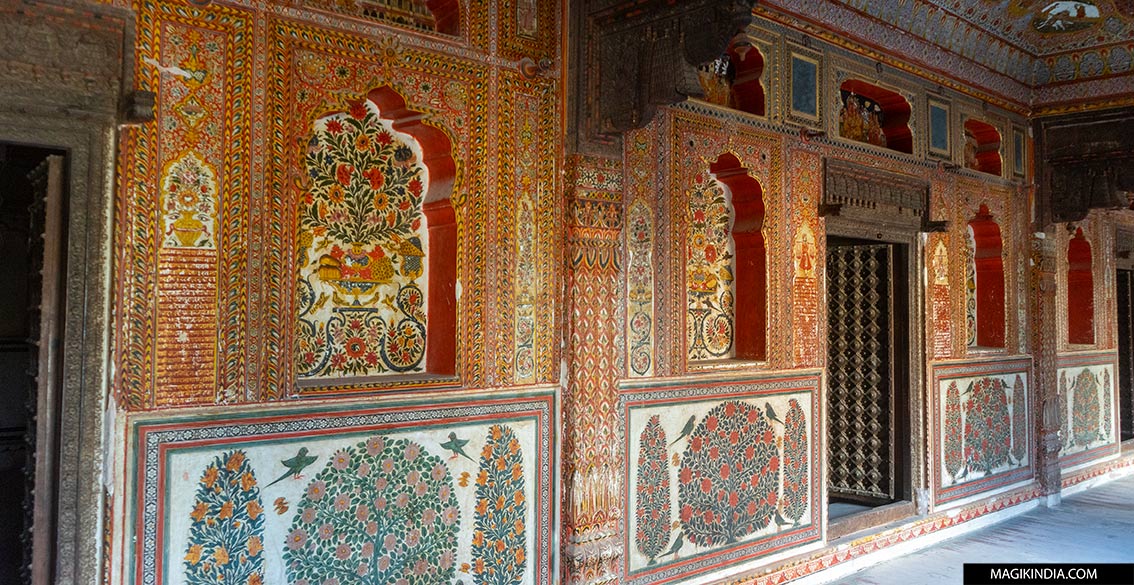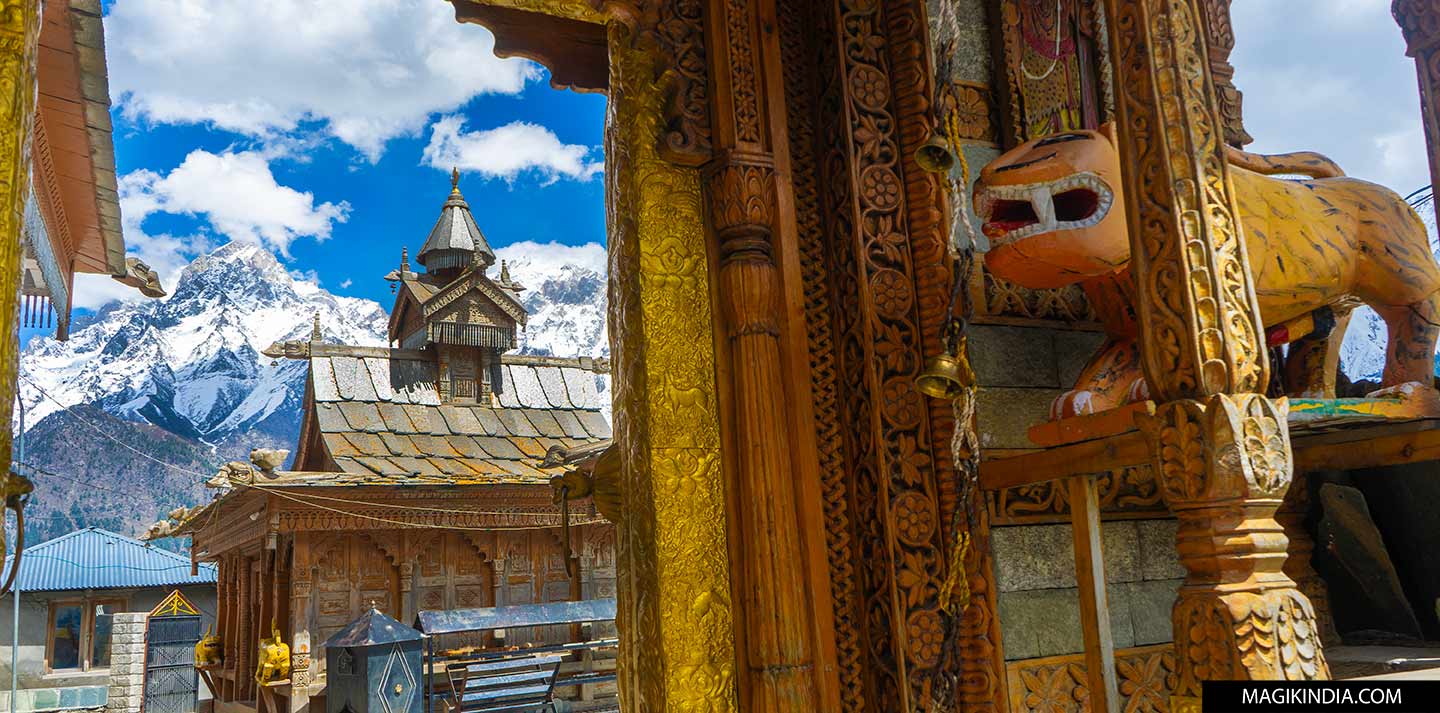
Chidambaram, the temple of eternal dance
On the road between Pondicherry and Thanjavur, in Tamil Nadu, stands the Chidambaram Temple, a place where sacredness takes an unexpected form. Shiva is celebrated here as Nataraja, the Lord of the Cosmic Dance, who embodies ether. This peculiarity is the prelude to the temple’s great secret: an empty space inviting us to seek the divine not in form, but in the invisible essence. The entire temple thus becomes a mirror of the universe and the human soul.
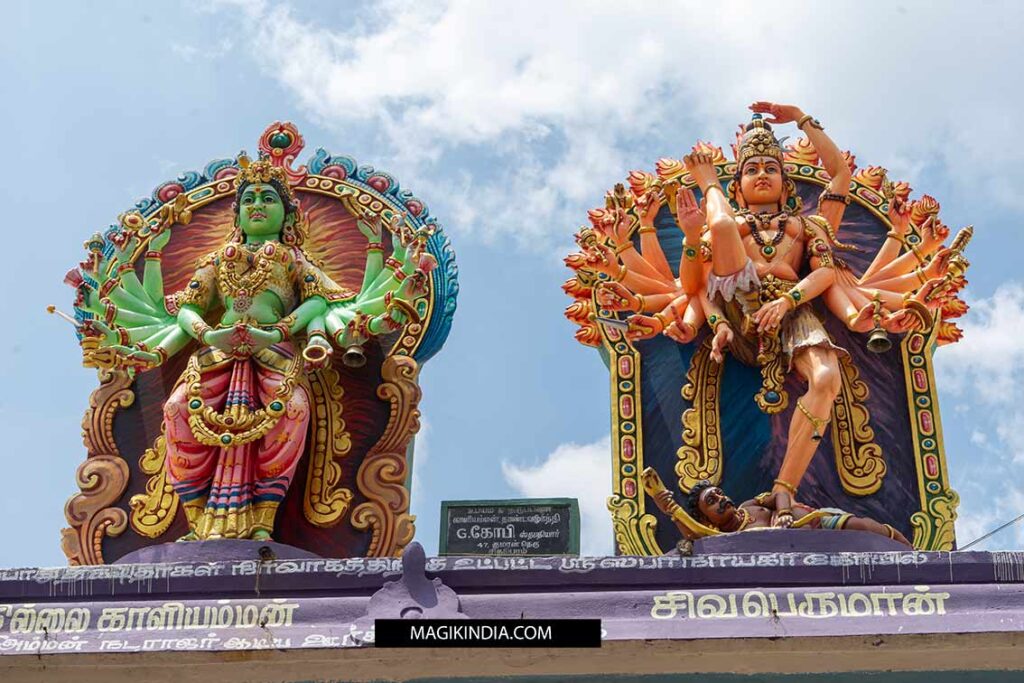
The name Chidambaram itself is steeped in the symbolism of the place. It is often considered a fusion of two etymologies. The first, older, comes from the Tamil word “Cirrambalam,” meaning “small hall,” referring to the primitive hut that stood in the heart of a mangrove forest.
Another, more metaphysical etymology breaks it down into “chit” (“consciousness”) and “ambaram” (“sky” or “ether”). This interpretation refers to the concept of “chidaakasam,” the “sky of consciousness,” a state of supreme bliss.
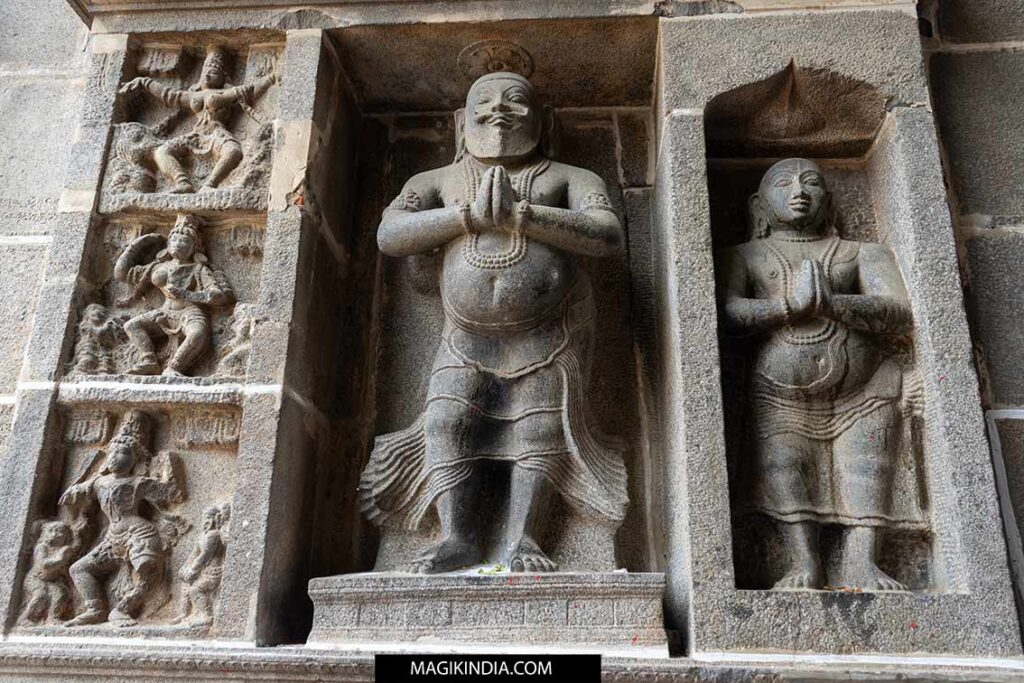
\This symbolism of ether is central as Chidambaram is one of the five Pancha Bhoota Sthalams, the sacred temples of Shiva representing the five natural elements. It embodies akasha, the element of space, which distinguishes it and places it at the heart of a deeply metaphysical significance.
Chidambaram Story
According to the sacred texts, two sages, Patanjali (the compiler of the classic collection of Yoga Sutras) and Vyaghrapada, longed to see Shiva’s “dance of bliss” in the forest of Thaillai, present-day Chidambaram.
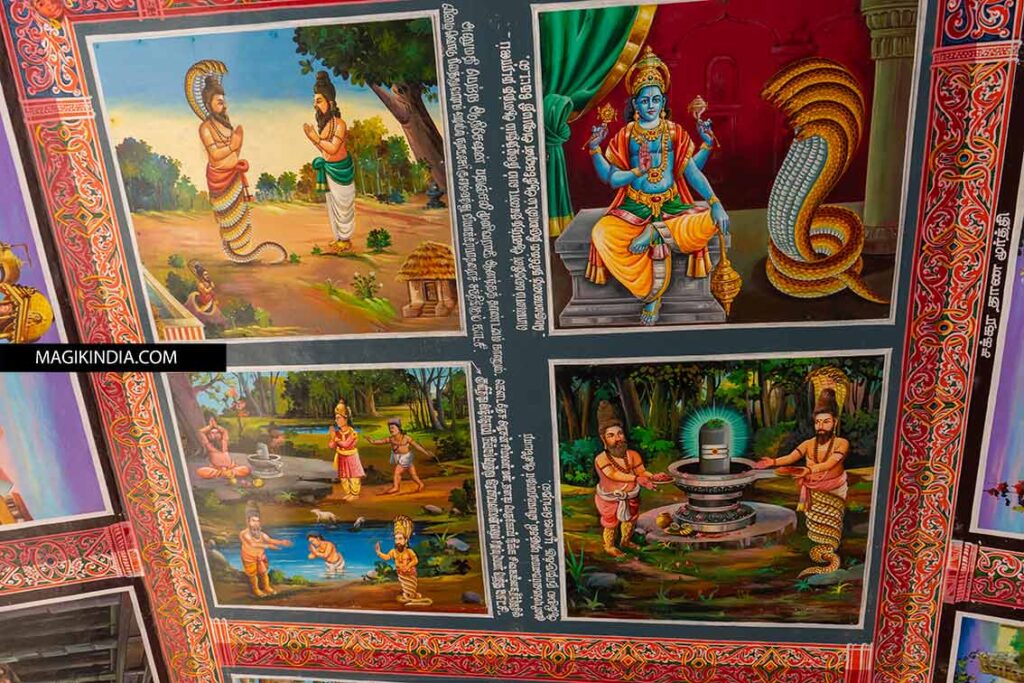
They erected a Shivalingam and then began to pray and meditate. Their asceticism and devotion so impressed Shiva that he appeared before them. According to tradition, Shiva then performed his sacred dance “against the wall, in the blessed hall of consciousness.” This divine appearance marked the founding of the temple.

The cosmic dance of Shiva Nataraja at Chidambaram Temple is a living representation of Patanjali’s Yoga Sutras. This dance is considered the perfect embodiment of yoga in action, a movement that symbolizes the union of the individual with the divine.
The Dikshitars, the guardians of the temple
The temple is administered hereditarily by the Chidambaram Dikshitar, Vaidika Brahmins (Vedic priests) who, according to sacred texts, were brought to Chidambaram and trained in the rites of Natajara by the sage Patanjali. Originally 2,999, they were called “Tillai Moovayaram,” and today they number 360.
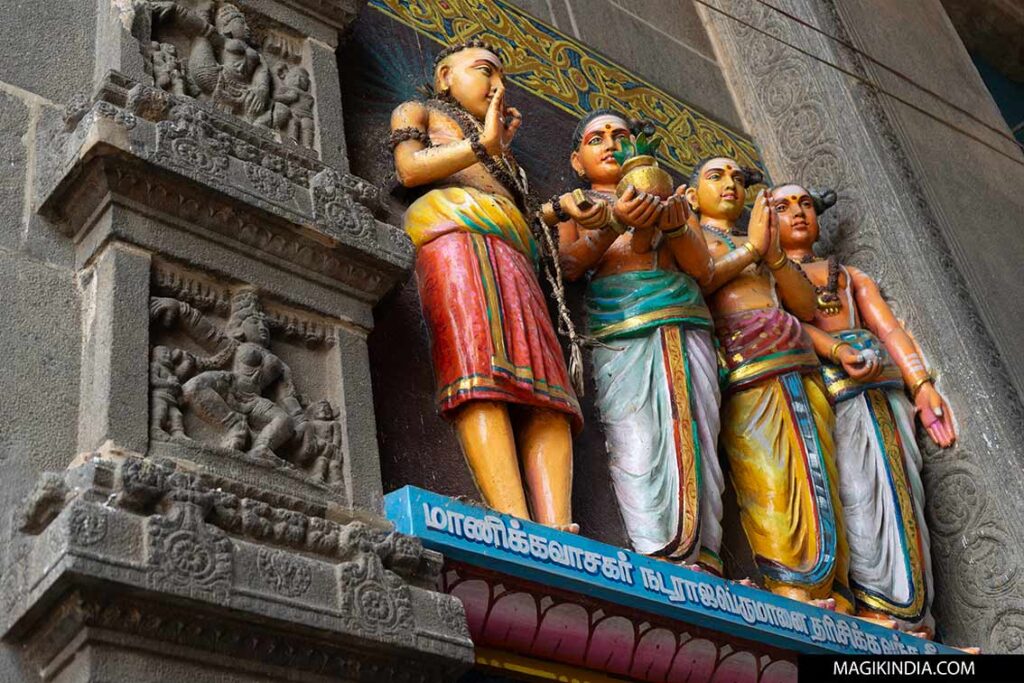
Dikshitars are recognisable by their unique hairstyle. Their long hair, with a tonsure around the edge, is pulled to the left side and tied in a bun. This practice is based on their belief that the right side of the body represents the masculine energy of Shiva, while the left side embodies the feminine energy of Shakti.
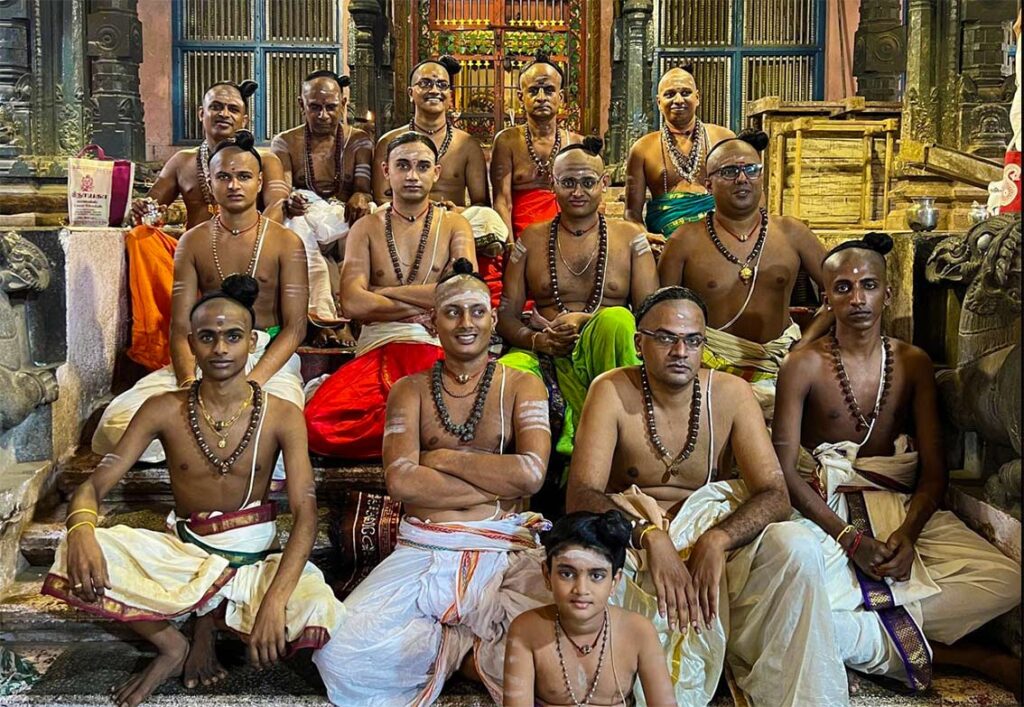
These Vedic priests believe that masculine and feminine energies are interdependent and must be in perfect balance to maintain the order of the universe. By choosing to wear their hair on the left side, they embody this divine union, symbolizing a complete and harmonious whole.
Temple architecture: an allegory of the human body
The Chidambaram Temple is a feat of Dravidian architecture, spread over 50 acres. The temple’s construction is a layering of contributions from various eras and dynasties, illustrating the continuity and vitality of the site.
Archaeological evidence suggests the presence of a Shiva temple as early as the 2nd century BCE. The Pandyas, the Vijayanagara kings, the Cheras, and the Pallavas all made significant additions. The temple reached its present form under the patronage of the Chola kings, particularly in the 11th, 12th, and 13th centuries. The Cholas considered Lord Nataraja their family deity (kuladeivam).
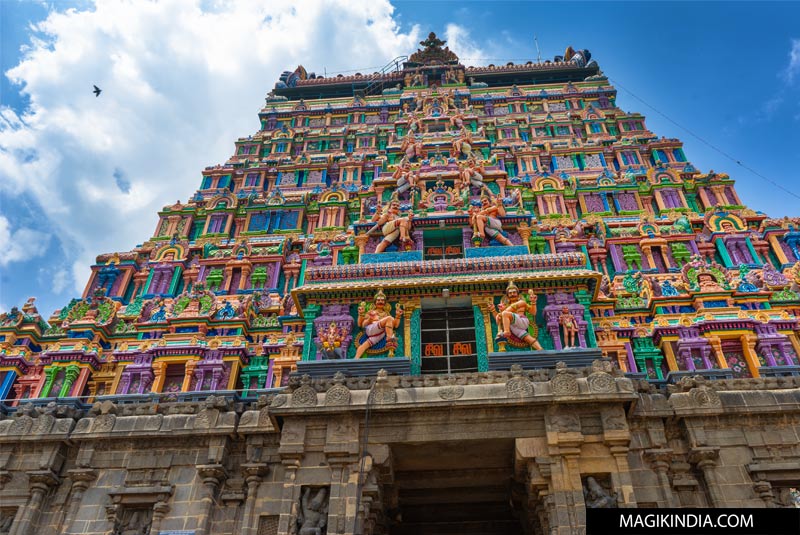
Each of the temple’s four gopurams (towers), rising about 76 meters, faces one of the cardinal points. The eastern tower is the most notable, as its sculptures illustrate the 108 dance postures (karanas) from the Natya Shastra, the definitive ancient treatise on Indian classical dance.
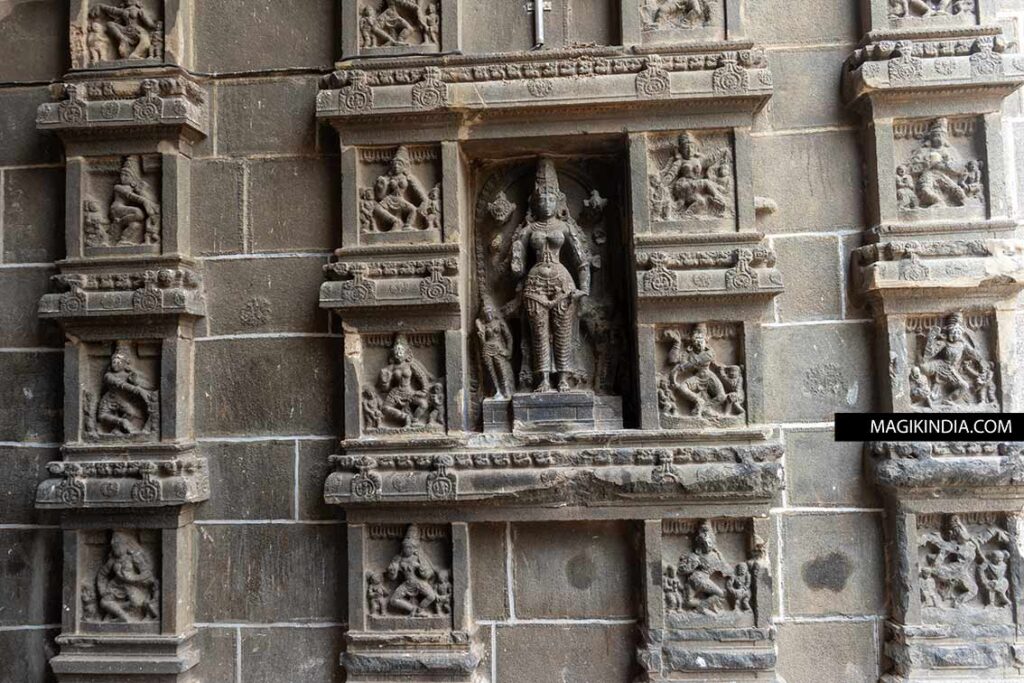
The Chidambaram temple is structured around several sacred halls: the Chit Sabha (the holy of holies), the Kanaka Sabha for rituals, the Nrithya Sabha which commemorates Shiva’s victory over Kali, the Deva Sabha housing festival deities, and the Raja Sabha, a 1000-pillar hall used during major events.
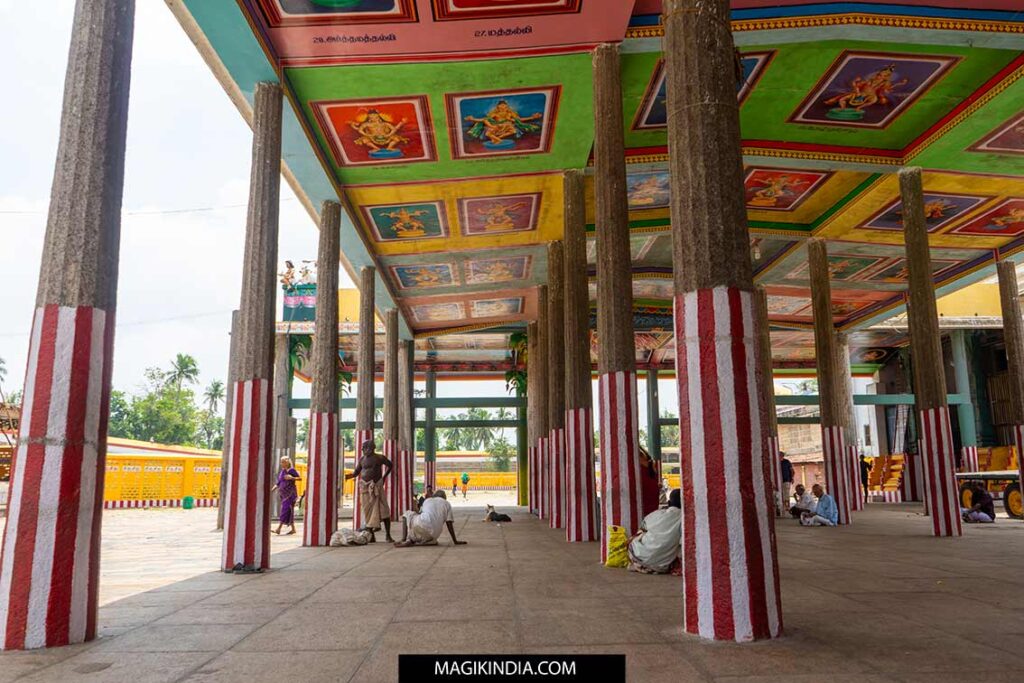
Beyond these five sabhas, there is among others a kund (sacred pond), the sanctuary of the original Shivalingam (Thirumoolattaneswarar) worshipped by Patanjali and Vyagrapathar, the sanctuary of the 63 Nayanmars (Arubathu moovar), that of the goddess Sivagami (incarnation of knowledge), as well as the sanctuaries dedicated to Lord Ganesh and Lord Muruga.
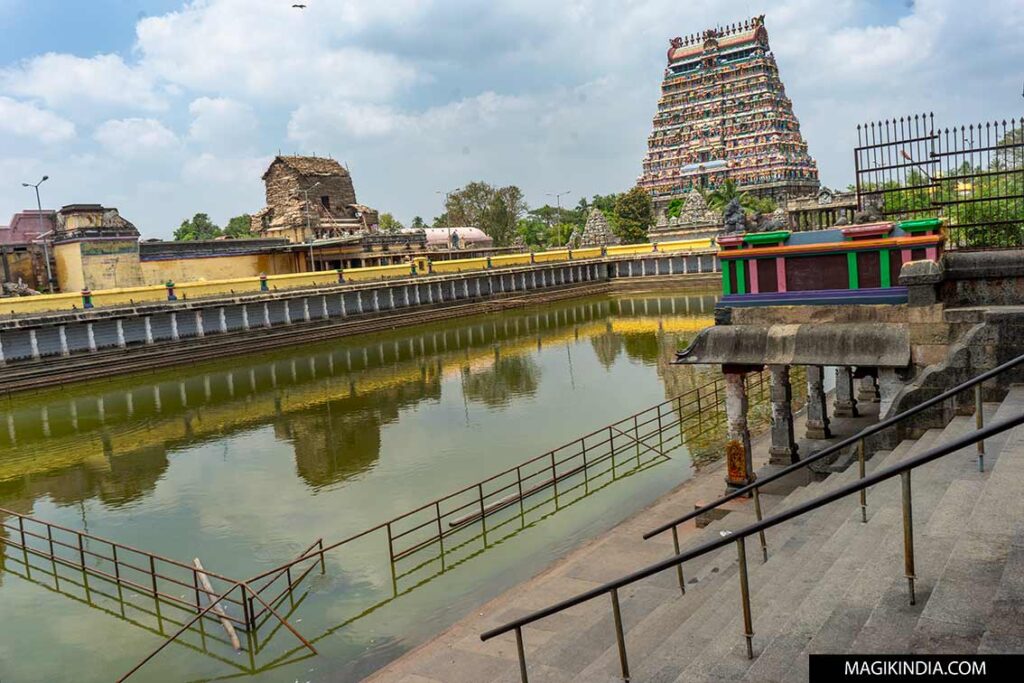
Chidambaram is conceived as an embodiment of the “Virat Purusha,” the human body. By exploring the temple, the pilgrim undertakes a symbolic journey through the human body and into the heart of consciousness.
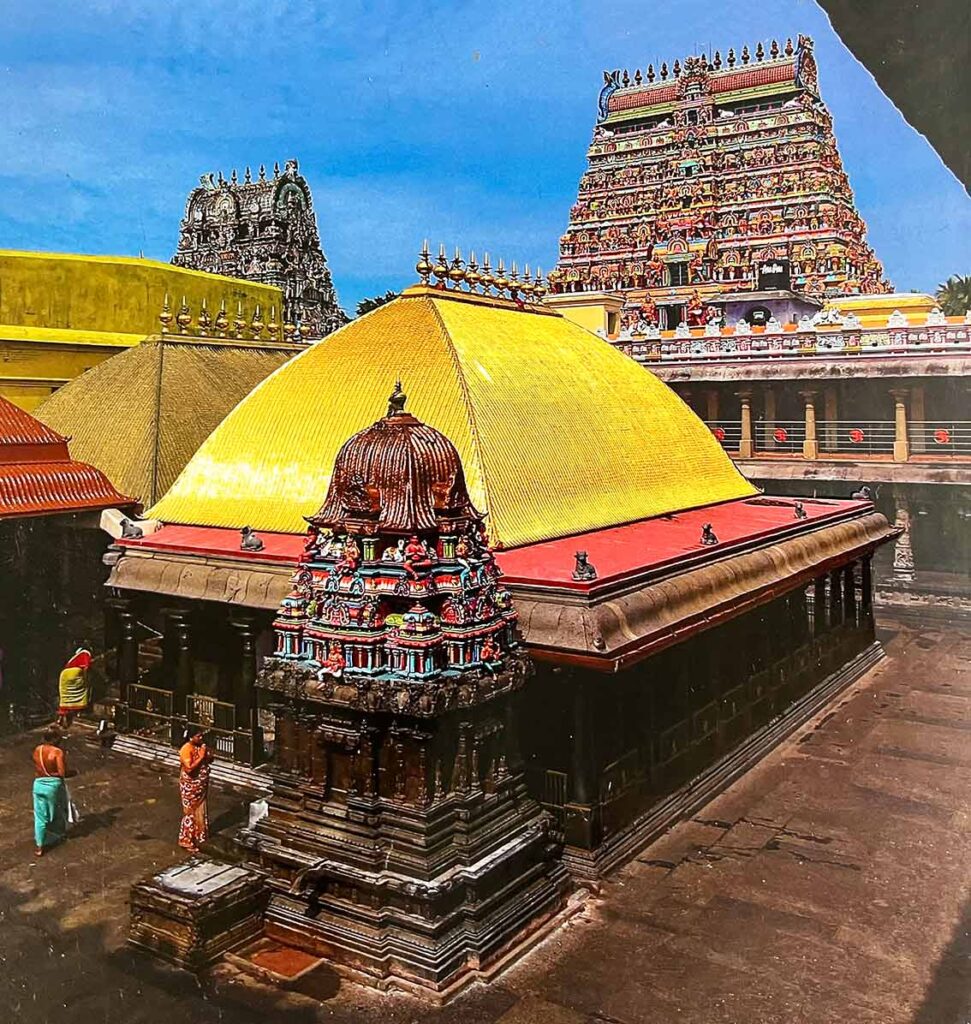
The heart is symbolized by the “Chit Sabha,” the main sanctuary. It is a wooden structure on a raised platform. It is reached by a staircase of five silver steps, the Panchaatchara padi, which represent the five syllables of Shiva’s sacred mantra, “Na-Ma-Si-Va-Ya.”
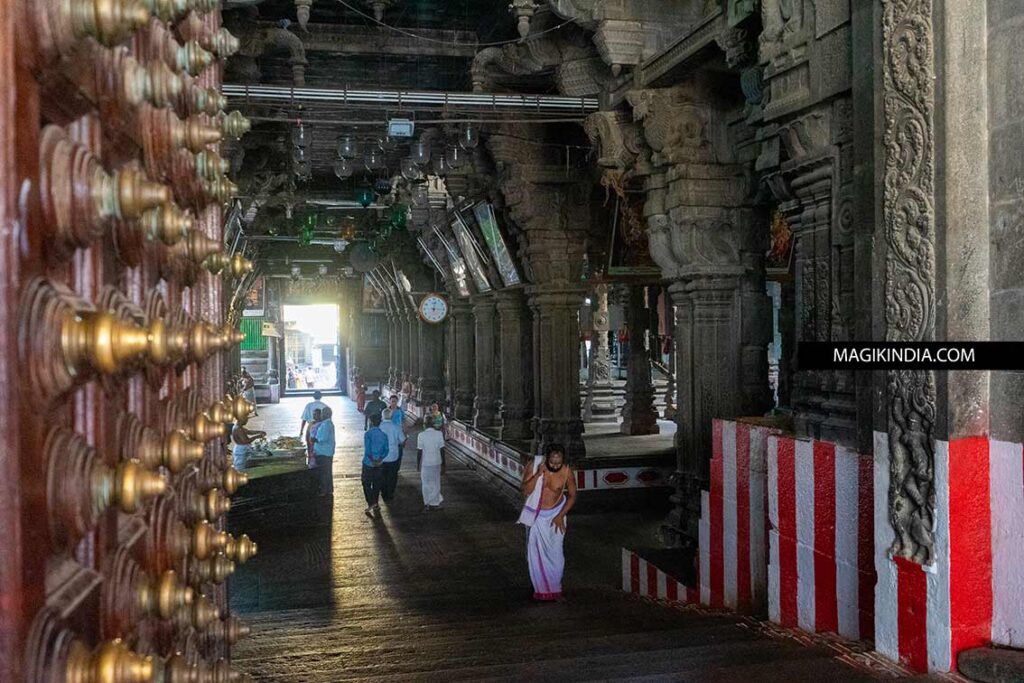
The symbolism of the architecture extends to the smallest details: the roof of the Chit Sabha is made of 21,600 gold tiles, representing the number of breaths taken by a human being in a day

As for the Raja Sabha or hall of 1000 pillars, it represents the top of the head which, in yogic philosophy, is the seat of the union of the soul with the divine.
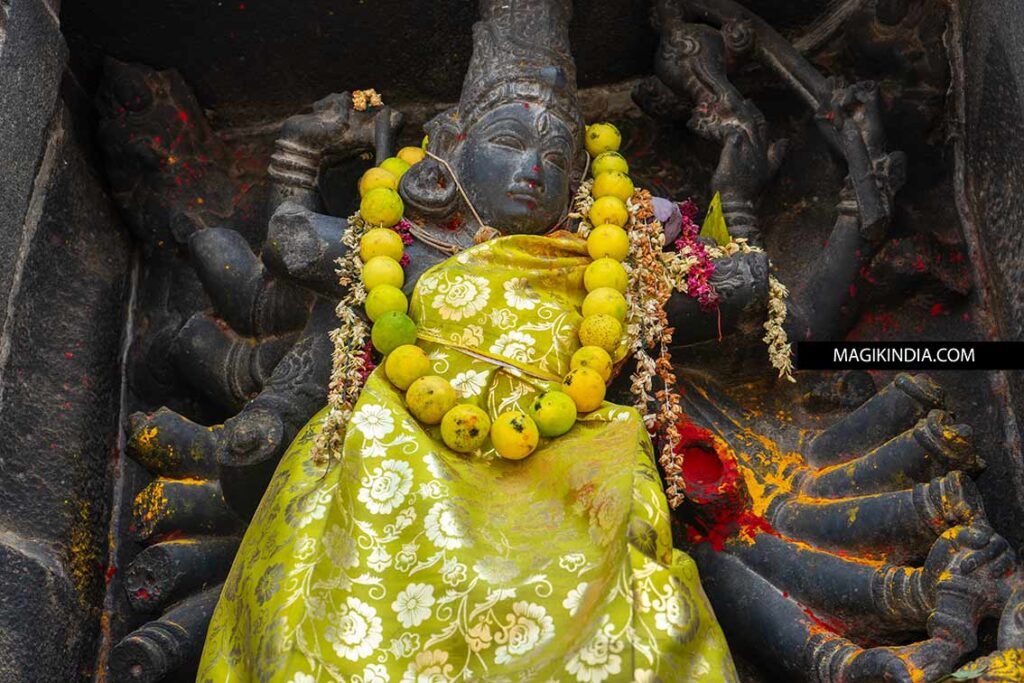
The Secret of Chidambaram
The unique feature of the Chidambaram temple is its veneration of Shiva in three distinct forms, all housed in the Chit Sabha, the golden-roofed sanctum:
- Sakala Thirumeni (Shiva with a form): This is the idol of Lord Nataraja, an anthropomorphic representation of Shiva as the Lord of Dance. The posture of his cosmic dance, the “Ananda Tandava”, represents the five divine activities that govern the universe and human life. These activities are creation (Shrishti), preservation (Sthiti), destruction (Samhara), illusion (Tirobhava) and liberation (Anugraha).
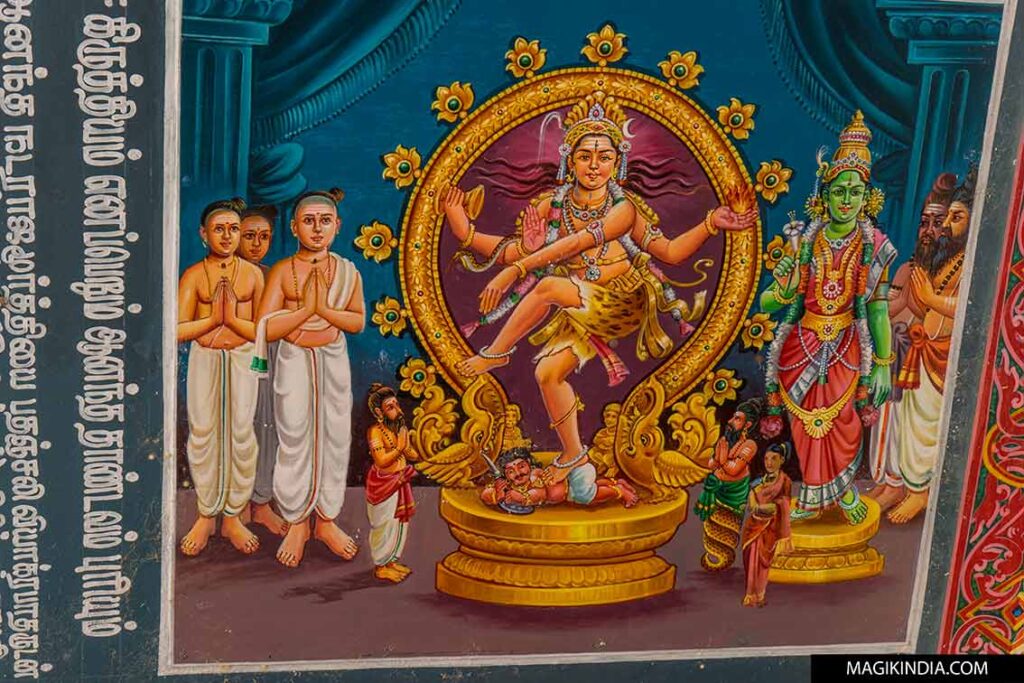
- Sakala Nishkala Thirumeni (Shiva with half form): A crystal Shivalingam, known as “Chandramauleswarar”, symbolizes the semi-manifested deity.
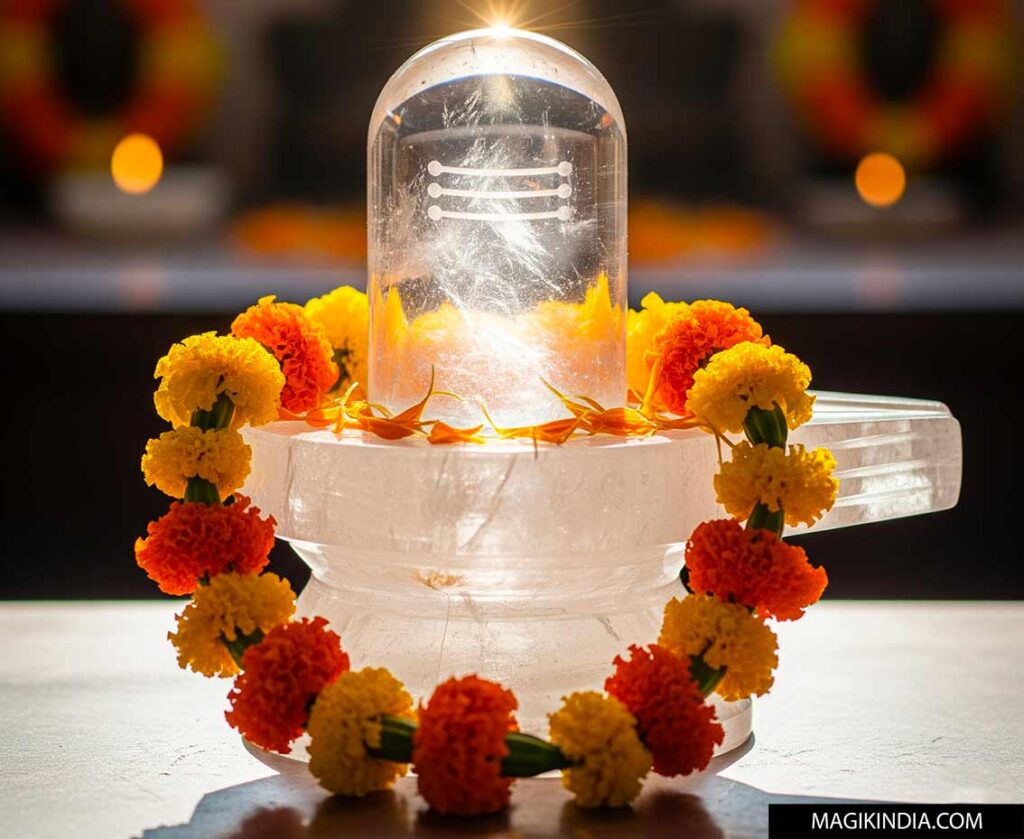
- Nishkala Thirumeni (formless Shiva): This is the most esoteric and revered concept in the temple, known as “Chidambara Rahasyam” (the “secret of Chidambaram”). Behind a black curtain, which symbolizes “maya” (ignorance), an empty space is decorated with garlands of golden bilva leaves*. It symbolizes akasha or Brahman, ether and eternal nothingness. It is believed to be the place where Lord Shiva and Goddess Shivagamasundari (Parvati) are present, but invisible to the naked eye.
*The three leaflets of the bilva leaf symbolize the trinity (Brahma, Vishnu and Shiva), as well as the three eyes of Shiva: the sun (right eye), the moon (left eye) and the third eye of knowledge on the forehead.

Temple rites & practical information
The day begins with the priest purifying himself before beginning the ceremonies. At 7:00 a.m., Shiva’s sandals are brought in procession, marking the beginning of the offerings.
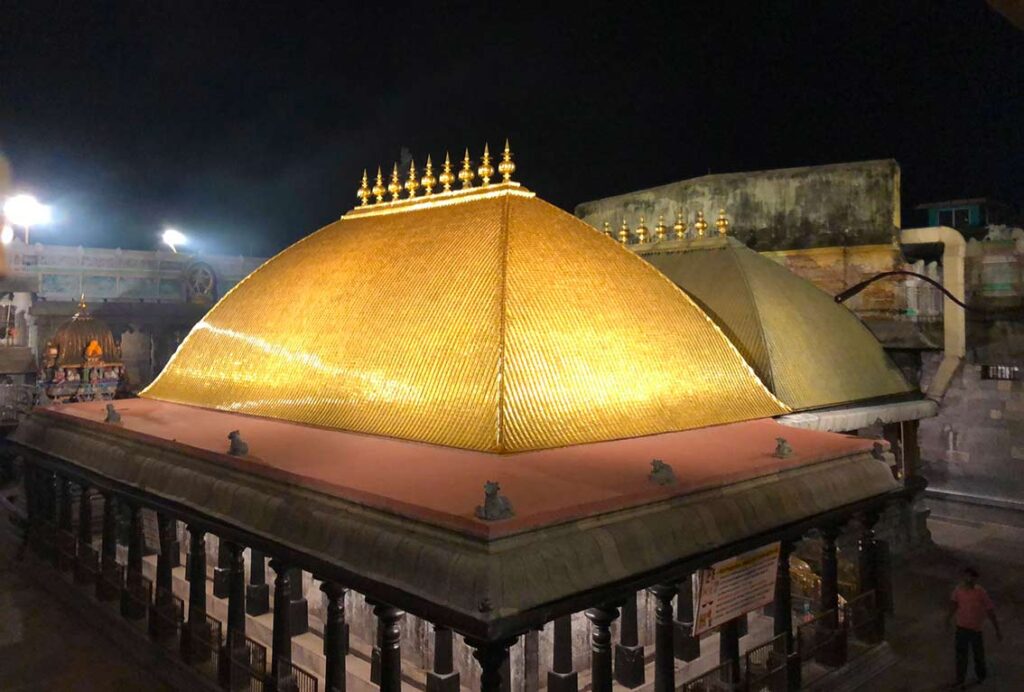
The worship (pooja) is performed six times a day. At each pooja, the crystal Shiva lingam is anointed with various substances (milk, honey, etc.), followed by food offerings and the recitation of sacred texts. Before the second pooja (Irandaam Kaalam), a ruby-studded Nataraja deity is also anointed. The ceremony concludes with the revelation of the “Chidambara Rahasyam”.
The last pooja, called Arthajaama pooja, is considered particularly fervent, as it is believed that divine forces retreat there. The day ends at 10:00 p.m. with a procession that carries Shiva’s sandals back to his chamber for the night.
The timings for Darshan (prayer and visit) at Chidambaram Temple are generally as follows:
- Morning: 6:00 AM to 12:00 PM
- Afternoon: The temple is closed between 12:00 PM and 5:00 PM.
- Evening: 5:00 PM to 10:00 PM

Dress code: Loose, modest clothing is recommended. For women, traditional Indian clothing such as sari, salwar kameez, or kurta with pants or leggings is recommended. For men, a dhoti or lungi is most appropriate. As in all South Indian temples, you will not be allowed to enter in shorts, Bermuda shorts, or short skirts. Shoulders and knees must be covered.
NOTE: The Chit Sabha (the holy of holies) is reserved for Hindus only. Foreigners can visit the outer areas of the temple, including the surrounding structures, gopurams, and mandapas.
Temple Festivals
Two annual ten-day festivals stand out for their grandeur and fervor:
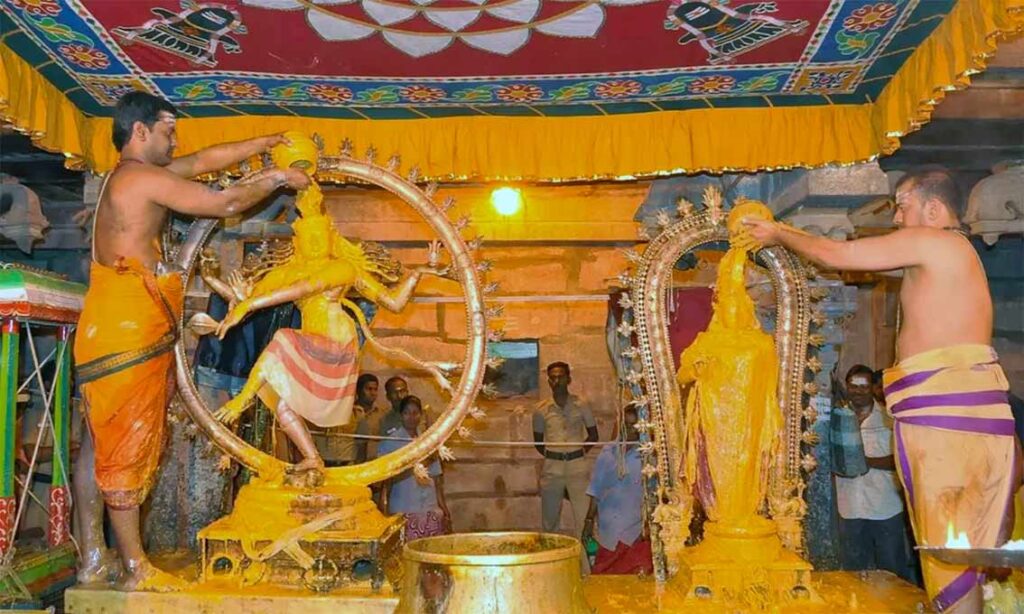
- Aani Tirumanjanam: Celebrated in June-July, this festival culminates with a grand Abhishekam (ritual bath) for Lord Nataraja and a grand chariot procession.
- Aarudra Darshan: Taking place in December-January, this is the other major festival, during which the idol of Nataraja is carried through the city streets on a chariot. These events are moments of intense devotion, illustrating the living faith that animates the temple.
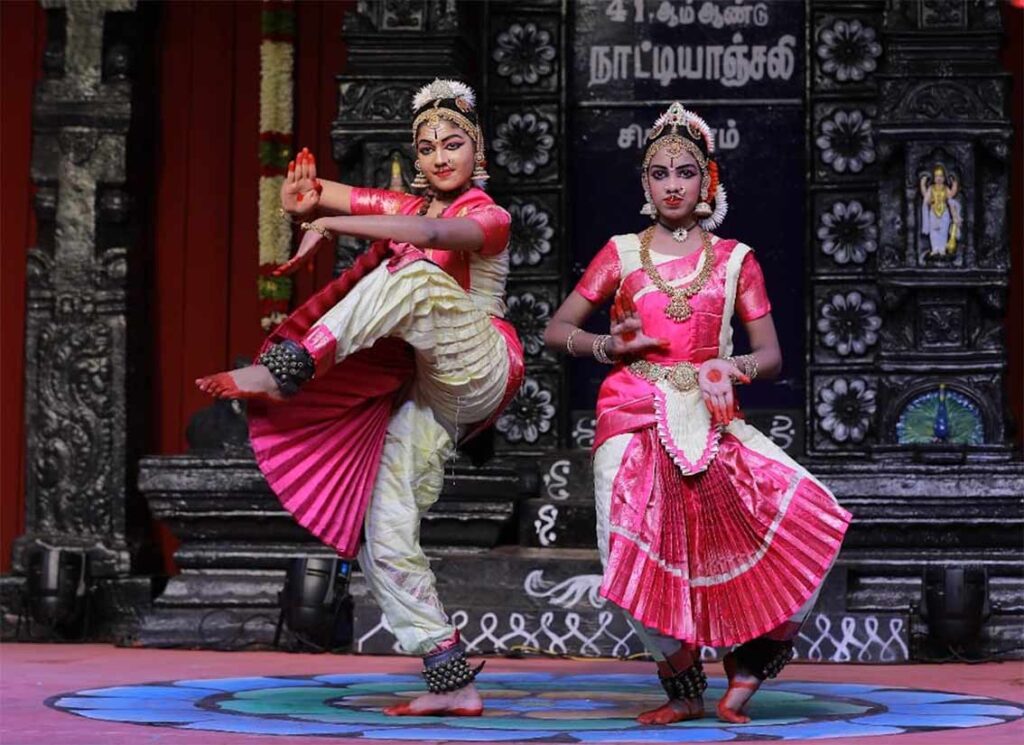
In addition to these rituals, the temple hosts the Natyanjali Festival, an annual classical Indian dance event held in honor of Shiva as Nataraja.
For five days during Mahashivaratri, in February or March, dancers from all over India perform various dance forms, such as Bharatanatyam, Kuchipudi, and Kathak. The Natyanjali Festival is a celebration where dance is considered a divine offering, blending art and spirituality.
TRAVEL TO TAMIL NADU WITH US!
